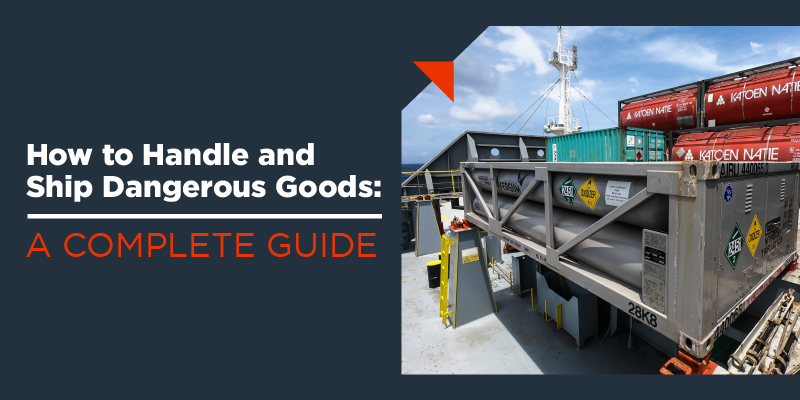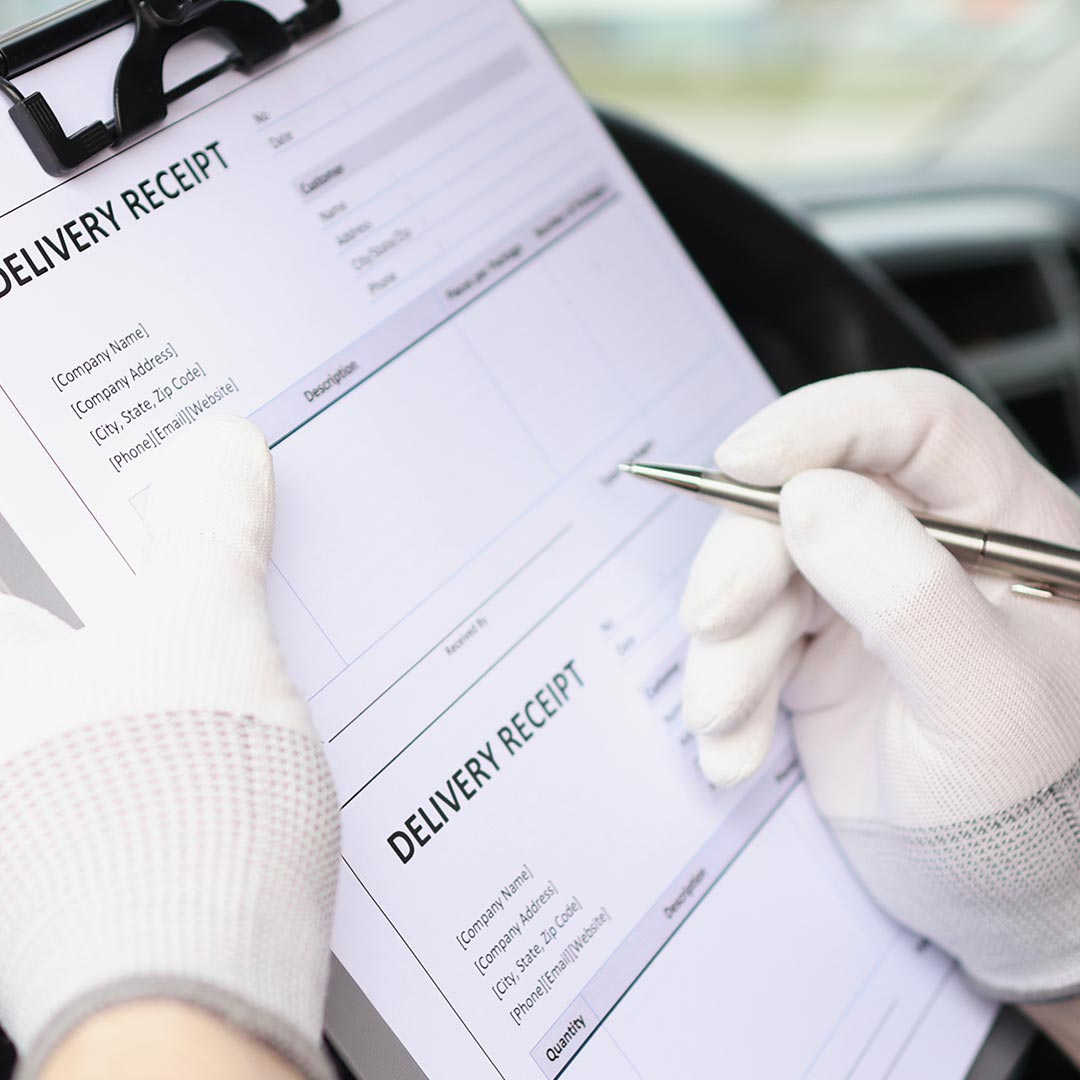
Venturing into international markets can present exciting opportunities for your business. If you’re planning to export or import products, you’ll have to take note of certain procedures and policies, especially if you’re going to ship dangerous goods.
Ultimately, exploring partnerships overseas will allow you to sell your products in different locations, granting you a big advantage over your competitors. But considering the risks posed by hazardous materials, both business owners and freight forwarders must be able to handle dangerous cargo properly.
To ensure everyone’s safety, different governing agencies have placed certain specifications and procedures when shipping certain items. As you acquire freight forwarding services, read up on our guide to know how you can safely ship hazardous goods.

What are Dangerous Goods?
The International Air Transport Association (IATA) states that dangerous goods are “items that may endanger the safety of an aircraft or persons on board the aircraft.” In the same sense, this definition also applies to products shipped via sea and land.
Given the risks posed by dangerous goods, transportation of these items is strictly monitored and governed by different regulatory agencies.
The International Civil Aviation Organization’s (ICAO) Technical Instructions, International Air Transport Association’s (IATA) Dangerous Goods Regulations (DGR), and the International Maritime Organization’s (IMO) International Maritime Dangerous Goods (IMDG) Code all play a vital role in ensuring everyone’s safety.
Classification of Dangerous Goods
The U.S. Department of Transportation (DOT) and international regulatory agencies recognize nine classes of dangerous goods.
Class 1 – Explosives
Explosives can quickly combust or detonate as a result of a chemical reaction. These produce gases at temperatures, pressures, and speeds that cause catastrophic damage through force or produce dangerous amounts of heat, light, sound, gas, or smoke.
Examples:
- Ammunition/cartridges
- Fireworks/pyrotechnics
- Flares
- Blasting caps/detonators
Class 2 – Gases
These are compressed gases, dissolved gases, refrigerated liquefied gases, mixtures of one or more gases with one or more vapors of substances, articles charged with a gas, and aerosols. Gases pose serious hazards because of their flammability, potential as asphyxiants, ability to oxidize, and their toxicity or corrosiveness to humans.
Examples:
- Aerosols
- Compressed air
- Hydrocarbon gas-powered devices
- Fire extinguishers
- Gas cartridges
Class 3 – Flammable liquids
Flammable liquids are mixtures of liquids or liquids containing solids in solution or suspension which give off a flammable vapor. These are hazardous due to their volatility, combustibility, and potential to cause or propagate severe conflagrations
Examples:
- Acetone/acetone oils
- Adhesives
- Paints/lacquers/varnishes
- Alcohols
- Perfumery products
- Gasoline/petrol
- Diesel fuel
- Aviation fuel
- Liquid biofuels
Class 4 – Flammable solids and spontaneous combustibles
Flammable solids are highly combustible items. They can cause a fire by friction and exposure to reactive substances. Substances liable to unexpected heating under normal transport conditions include the following:
Examples:
- Alkali metals
- Metal powders
- Sodium batteries
- Sodium cells
- Matches
- Camphor
- Carbon
- Activated carbon
Class 5 – Oxidizers and organic peroxides
Oxidizers are substances that may contribute to combustion. Organic peroxides are substances derived from hydrogen peroxide, which are thermally unstable substances that can self-react when exposed to certain temperatures.
Examples:
- Chemical oxygen generators
- Chlorates
- Nitrates
- Nitrites
- Perchlorates
6. Class 6 – Toxic and infectious substances
Toxic substances can cause death or serious injury to human health through ingestion, inhalation, or skin contact. Infectious substances contain pathogens (microorganisms that can cause diseases in humans or animals.)
Examples:
- Medical/biomedical waste
- Clinical waste
- Biological cultures/samples/ specimens
- Medical cultures/samples/specimens
- Tear gas substances
7. Class 7 – Radioactive materials
These are substances and objects with radioactive components/materials. If not handled properly, they can cause serious damage to one’s health. Since radioactivity can neither be tasted nor smelled, it poses a particular danger by altering human and animal DNA.
Examples:
- Radioactive ores
- Medical isotopes
- Yellowcake powder
- Density gauges
- Mixed fission products
- Contaminated surface objects
8. Class 8 – Corrosives
Corrosives refer to substances that can severely damage materials upon direct exposure. They can destroy solid surfaces and even living tissue, so extreme caution is advised.
Examples:
- Acids/acid solutions
- Batteries
- Battery fluid
- Fuel cell cartridges
- Dyes
- Formaldehyde
9. Class 9 – Miscellaneous dangerous goods
Class 9 accommodates all other dangerous goods that don’t belong in Classes 1 to 8. Often, they’re genetically modified or emit flammable vapors.
Examples:
- Genetically modified microorganisms
- Lithium batteries
- Polychlorinated biphenyls
- Polymers
- Asbestos
- Heated substances (such as bitumen or liquid aluminum)
- Rescue equipment (such as airbags or belt systems)
Shipping Dangerous Goods Safely: 7 Steps for Success
Dangerous goods are labeled as such for the risk they pose during deliveries. It’s why governing bodies such as the U.S. DOT requires all handlers to be trained before they ship these dangerous materials. Not following or ignoring these shipping regulations will get your business fined, or worse—get you imprisoned.
To ensure that your deliveries go smoothly, below are seven best practices to follow when shipping dangerous goods.
1. Take note of government regulations
As the business owner, you’re responsible for classifying, identifying, packing, marking, and labeling dangerous goods according to national and international governmental regulations. Specifications may vary greatly per country, but the consensus is that all parties involved must be responsible when shipping hazardous cargo.
One of the regulations is the Hazardous Material Transportation Act (HMTA) of 1975, which aims to provide ample protection against the risks to life and property in the transportation of hazardous material.
Meanwhile, international regulations for transporting dangerous goods in air freight are covered by IATA’s DGR. It’s the primary source for preparing and documenting hazardous shipments.
2. Classify and declare your goods to determine your shipping options
You must correctly identify the type of dangerous goods you send, as there are different restrictions on goods depending on their classification. Refer to the nine varieties of dangerous goods earlier if you’re unsure which category your items fall under.
3. Secure the necessary documents
When shipping dangerous goods, ensure that all goods are declared in your air waybill and commercial invoice under “Item Description.” Failure to submit the requirements can lead to massive delays at customs.
Several documents are involved in the shipment of hazardous goods: the Material Safety Data Sheet (MSDS), Dangerous Goods (DG) Request, DG Packing List/Declaration, DG Manifest, Transport Emergency (TREM) Card, and many more depending on the nature, country of shipment and receipt, and mode of transport of the goods.
4. Pack your products carefully
Make sure that packing materials are free of damage or any unrelated labels. Certain hazardous shipments may be affected by moisture, compression, water entry, or heat, so the container used must be of good quality.
Ensure that you also include the shipping name, the consignee’s name and address, and the consignor’s name and address. A label identifying the risk coming from the package and a UN number identifying the type of dangerous goods in the shipment should also be present. Lastly, take some time to know which shipping container types will work best for your products.
5. Train staff on the process of dangerous goods transportation
You should properly train cargo handlers, equipment operators, packers, documentary staff, truckers, and hazardous goods approvers to handle dangerous goods. Furthermore, they should be aware of the port regulations, national policies, and all other processes involved when shipping dangerous goods.
6. Prepare extra money for surcharges
The shipping company may impose additional surcharges for certain types of dangerous goods due to their high level of danger. There are two categories when assessing surcharges:
- Accessible Dangerous Goods (ADG): Package content must be accessible during transit for security reasons. These often have a higher surcharge.
- Inaccessible Dangerous Goods (IDG): Package content doesn’t have to be accessed during transit and can be mixed with other cargo.
7. Always research for shipping limits
Familiarize yourself with dangerous goods that can’t be shipped via air or sea freight. Compliance with governing bodies will ensure that you’ll keep people safe, stay away from hefty fines, and more. Always research for limits before shipping dangerous goods, as policies may be subject to change.
Ship Dangerous Goods Safely
Shipping dangerous goods have many risks, but your deliveries should go smoothly if you do it right. As you ship your products, following the best practices above will allow you to go about your deliveries with no hiccups!
We understand that sending your products overseas can be overwhelming if you’re shipping dangerous goods for the first time. Luckily, partnering with a proven international freight forwarder in the Philippines will allow you to navigate the intricacies of shipping. Got any questions in mind? Don’t hesitate to get in touch with us!



